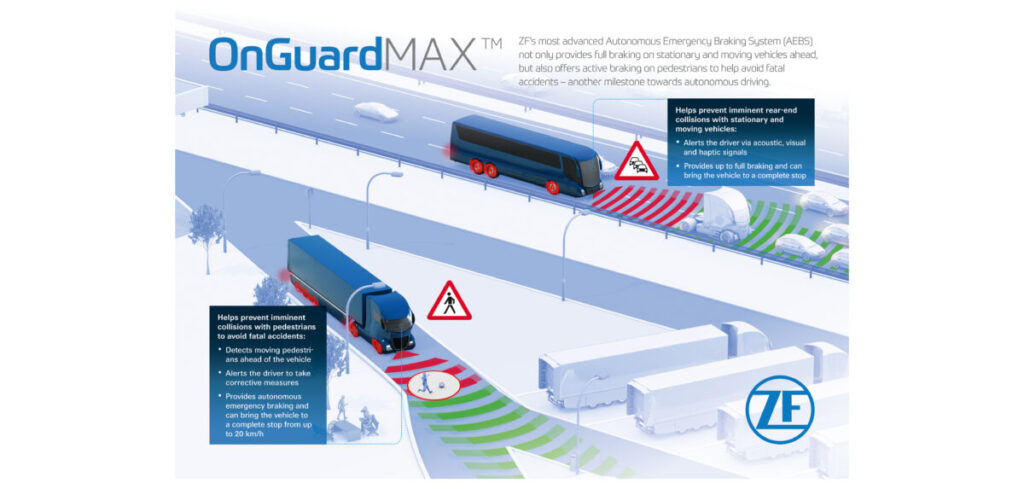ZF is preparing for volume production in China of what the company says is its most advanced autonomous emergency braking assistance system. The OnGuardMAX system will be installed in new truck models by two Chinese manufacturers from this year.
According to ZF, sophisticated data integration with state-of-the-art camera and radar sensors helps the system autonomously detect, classify and react to moving and stationary vehicles, motorcycles and bicycles. The system warns the driver of imminent collisions and, if necessary, can autonomously bring the vehicle to a complete stop.
“Current orders and the start of volume production of our most advanced driver assistance system in China demonstrate the extensive capabilities of the expanded ZF Group following the acquisition of WABCO. Fully in line with our ‘See. Think. Act’ principles, ZF’s OnGuardMAX system further reinforces our technology leadership in addressing commercial vehicle driver assistance and autonomous driving solutions,” explained Wilhelm Rehm, member of the board of management of ZF and responsible for commercial vehicle and industrial technology. “After the recent acquisition of WABCO as a ‘perfect match’ for ZF, our strategy is already clearly bearing fruit.”
Information from the radar sensor and high-resolution dual-lens camera is analyzed by a high-performance image processing module. This is controlled by ZF software which can, if required, also activate the ZF-supplied brake system autonomously.
If a driver does not take appropriate corrective action to a developing situation, the system autonomously initiates emergency braking from speeds of up to 80km/h and can bring the vehicle to a complete stop to help prevent a collision. The system also identifies pedestrians, for example, when the vehicle is driven through city centers and is able to stop the vehicle from speeds of 20km/h to help prevent collisions with pedestrians.
“In the commercial vehicle sector, the introduction of autonomous driving functions has particularly strong potential,” concluded Rehm. “Further ZF developments will also head in this direction.”


